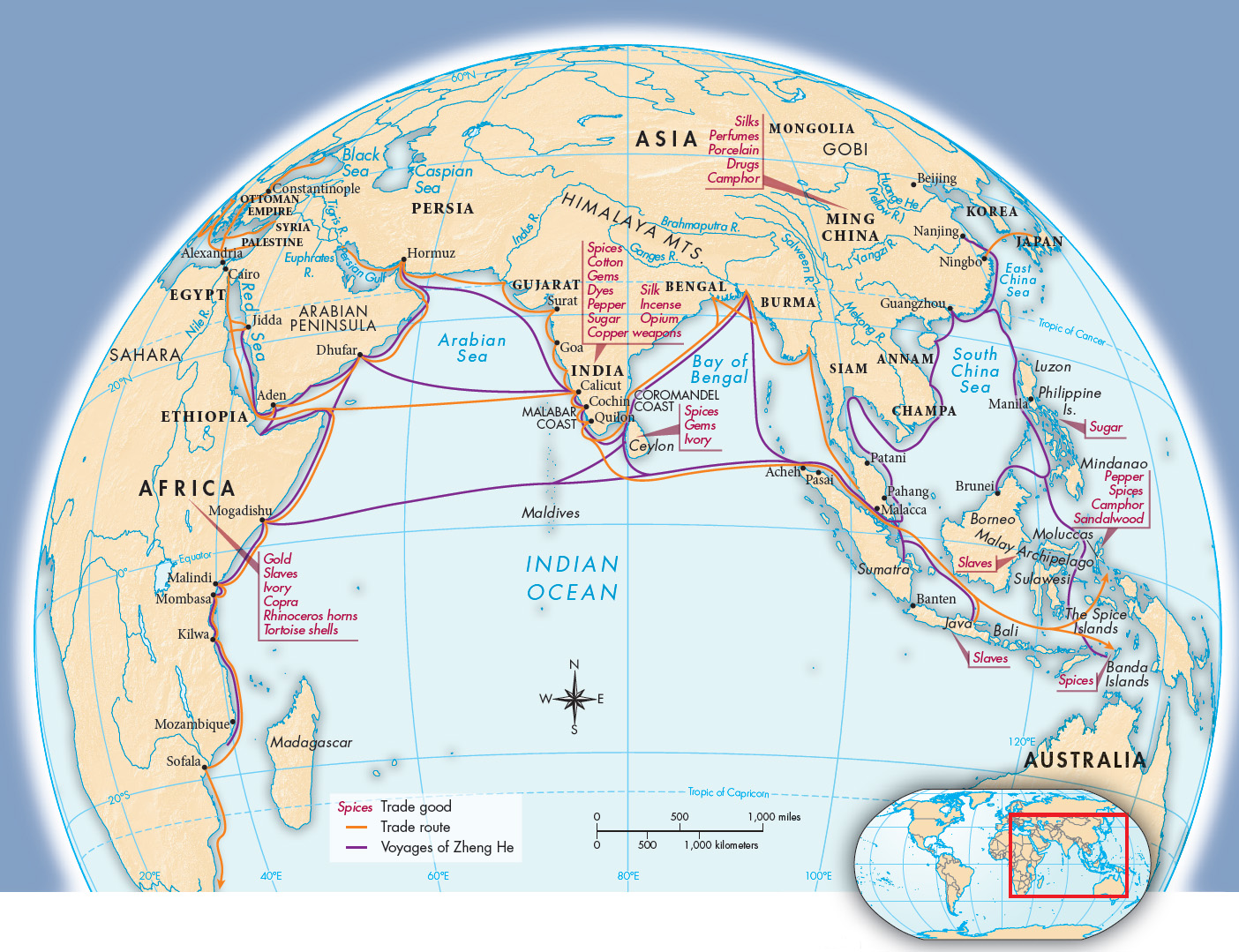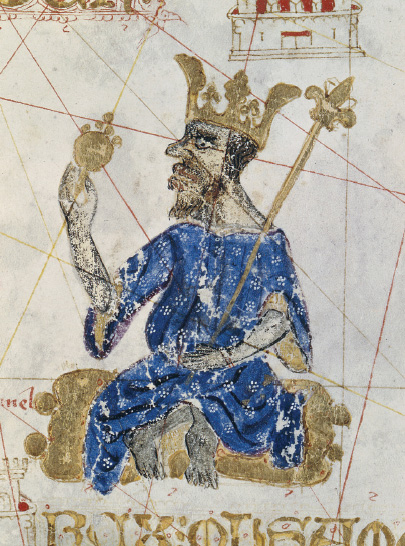The Trade World of the Indian Ocean
The Indian Ocean was the center of the Afroeurasian trade world, serving as a crossroads for commercial and cultural exchanges between China, India, the Middle East, Africa, and Europe (Map 16.1). From the seventh through the fourteenth centuries, the volume of this trade steadily increased, declining only during the years of the Black Death.

Merchants congregated in a series of multicultural, cosmopolitan port cities strung around the Indian Ocean. Most of these cities had some form of autonomous self--government, and mutual self-interest had largely limited violence and attempts to monopolize trade. The most developed area of this commercial web was made up of the ports surrounding the South China Sea. In the fifteenth century the port of Malacca became a great commercial entrepôt (AHN-truh-poh), a trading post to which goods were shipped for storage while awaiting redistribution to other places.

The Mongol emperors opened the doors of China to the West, encouraging Europeans to do business there. After the Mongols fell to the Ming Dynasty in 1368, China entered a period of agricultural and commercial expansion, population growth, and urbanization. Historians agree that China had the most advanced economy in the world until at least the start of the eighteenth century.
China also took the lead in exploration, sending Admiral Zheng He’s fleet as far west as Egypt. (See “Individuals in Society: Zheng He,” page 410.) From 1405 to 1433, each of his seven expeditions involved hundreds of ships and tens of thousands of men. The purpose of the voyages was primarily diplomatic, to enhance China’s prestige and seek tribute-paying alliances. The voyages came to a sudden halt after the deaths of Zheng and the emperor who initiated his voyages, probably due to court opposition to their high cost and contact with foreign peoples.
By ending large-scale exploration on China’s part, this decision marked a turning point in history. Nonetheless, Zheng He’s voyages left a legacy of increased Chinese trading in the South China Sea and Indian Ocean. Following Zheng He’s voyages, tens of thousands of Chinese emigrated to the Philippines, where they acquired commercial dominance of the island of Luzon by 1600.
Another center of Indian Ocean trade was India, the crucial link between the Persian Gulf and the Southeast Asian and East Asian trade networks. Trade among ports bordering the Indian Ocean was revived in the Middle Ages by Arab merchants who circumnavigated India on their way to trade in the South China Sea. The need for stopovers led to the establishment of trading posts at Gujarat and on the Malabar coast, where the cities of Calicut and Quilon became thriving commercial centers.
The inhabitants of India’s Coromandel coast traditionally looked to Southeast Asia, where they had ancient trading and cultural ties. Hinduism and Buddhism arrived in Southeast Asia from India during the Middle Ages, and a brisk trade between Southeast Asian and Coromandel port cities persisted from that time until the arrival of the Portuguese in the sixteenth century. India itself was an important contributor of goods to the world trading system. Most of the world’s pepper was grown in India, and Indian cotton and silk textiles were also highly prized.